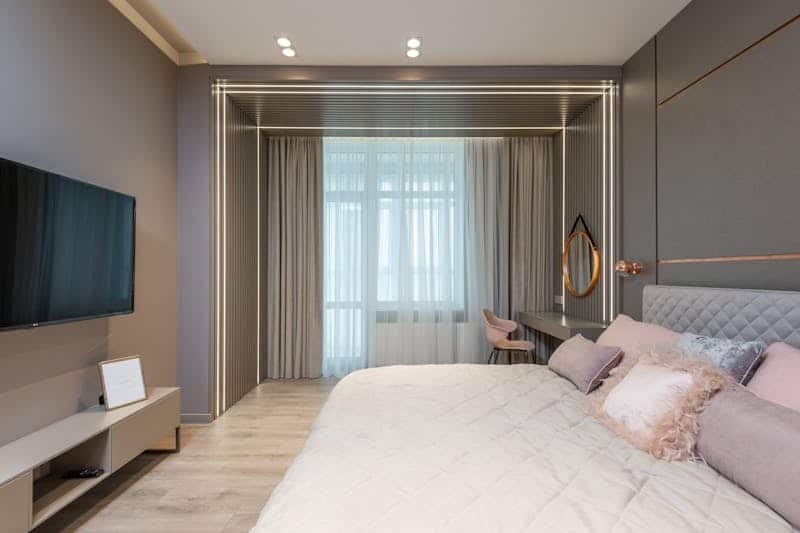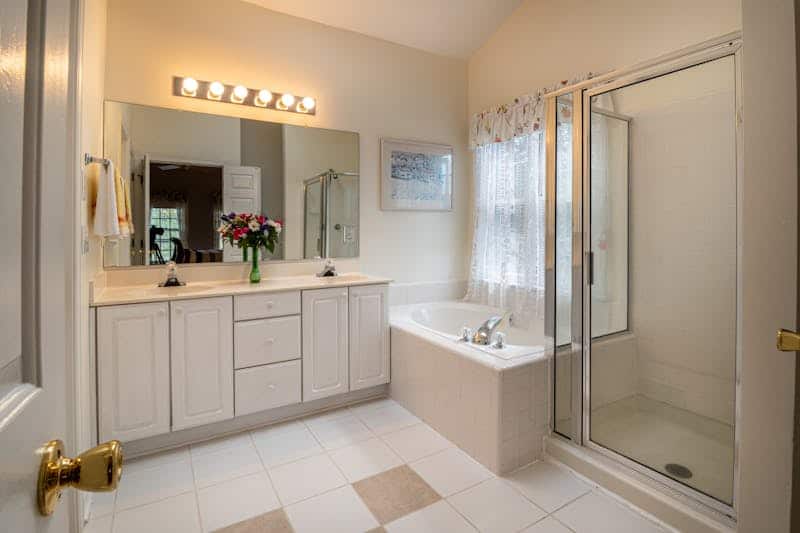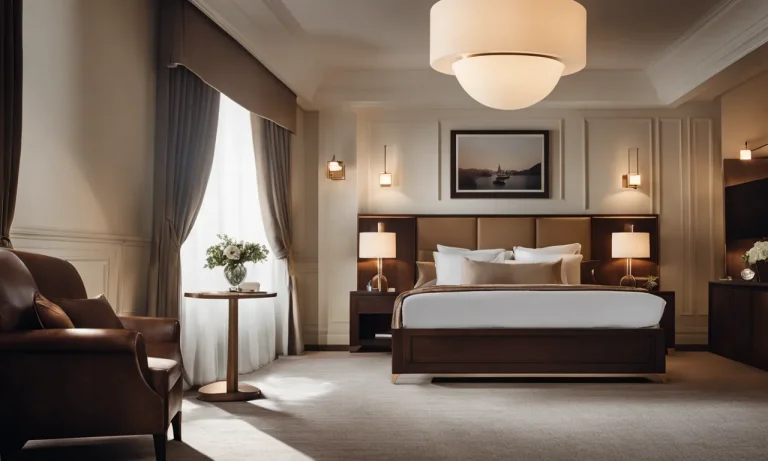When booking a hotel, you’ll often see room types like ‘studio suites’ and ‘one-bedroom suites’ listed. But what exactly is the difference between these two upgraded suite options?
If you’re short on time, here’s a quick answer: Studio suites combine the bedroom and living space into a single room, while one-bedroom suites have separate bedroom and living room areas.
In this comprehensive guide, we’ll compare the layout, amenities, intended uses, and other key differences between studio and one-bedroom hotel suites.
Studio Suite Layout and Design
When it comes to hotel accommodations, studio suites are a popular choice for travelers. These suites offer a unique layout and design that sets them apart from traditional one-bedroom suites.
Let’s take a closer look at the key features of a studio suite:
Open Floor Plan
One of the main characteristics of a studio suite is its open floor plan. Unlike a one-bedroom suite that typically has separate rooms for living, sleeping, and dining, a studio suite combines all these areas into one spacious room.
This open layout creates a sense of fluidity and allows guests to move around freely without feeling confined.
In a studio suite, you’ll find a comfortable seating area where you can relax and unwind after a long day of sightseeing or business meetings. This area is usually furnished with a cozy sofa or armchairs, a coffee table, and a television for entertainment purposes.

Living and Sleeping Areas Combined
Another distinguishing feature of a studio suite is the combination of living and sleeping areas. In a traditional one-bedroom suite, these areas are separate, giving guests more privacy and separation.
However, in a studio suite, the living and sleeping spaces are seamlessly integrated, creating a multifunctional space.
The sleeping area in a studio suite typically features a comfortable bed, nightstands, and ample storage space for your belongings. Depending on the hotel, the bed may be a queen-size or king-size bed, ensuring a good night’s sleep for guests.
While the living and sleeping areas are combined, hotels often use clever design techniques to create a sense of separation and privacy. This can be done through the strategic placement of furniture or the use of decorative room dividers.
One-Bedroom Suite Layout
When comparing a studio suite and a one-bedroom suite, one of the key differences lies in their respective layouts.
Let’s take a closer look at the layout of a one-bedroom suite.
Separate Bedroom and Living Spaces
Unlike a studio suite, a one-bedroom suite offers the convenience of separate bedroom and living spaces. This means that you can enjoy a dedicated sleeping area where you can unwind and relax in privacy.
The bedroom is typically furnished with a comfortable bed, bedside tables, and ample storage for your belongings.
In the living area, you’ll find a cozy seating arrangement with a sofa or chairs, a coffee table, and a television for your entertainment. This separation between the bedroom and living spaces allows for a more spacious and comfortable stay, giving you the freedom to move around and make yourself at home.

More Privacy
Another advantage of a one-bedroom suite is the increased privacy it offers. With a separate bedroom, you can enjoy a peaceful night’s sleep without any disturbances from other guests or activities in the living area.
Whether you’re traveling for business or leisure, having your own private space can make a world of difference in terms of comfort and relaxation.
Additionally, the layout of a one-bedroom suite allows for a greater sense of privacy when hosting guests.
If you have friends or family visiting, they can stay in the living area while you retreat to your bedroom for some quiet time. This flexibility ensures that everyone can enjoy their stay without feeling cramped or intruded upon.
Amenities and Inclusions
Kitchenettes
One of the key differences between a studio suite and a one-bedroom suite is the presence of a kitchenette. While both types of suites offer a small kitchen area, a one-bedroom suite typically has a more spacious and fully equipped kitchen compared to a studio suite.
In a one-bedroom suite, you can expect to find amenities such as a refrigerator, stovetop, microwave, and dishwasher, allowing you to prepare meals and store groceries with ease. On the other hand, a studio suite may have a smaller kitchenette with limited appliances, making it more suitable for basic meal preparation and storing snacks.
Enhanced Bathrooms
When it comes to bathrooms, one-bedroom suites often offer more spacious and luxurious facilities compared to studio suites. You can typically find a larger vanity area with ample counter space, a bathtub, and a separate shower in a one-bedroom suite.
These enhanced bathroom features provide added comfort and convenience during your stay. While studio suites may still have a functional and well-maintained bathroom, they may not offer the same level of luxury and space as a one-bedroom suite.

Better Entertainment
For those who enjoy entertainment options during their stay, a one-bedroom suite often provides a better selection compared to a studio suite. One-bedroom suites typically come equipped with larger flat-screen televisions, premium cable or satellite channels, and sometimes even home theater systems.
These enhanced entertainment options can enhance your overall experience and make your stay more enjoyable. Studio suites, while still offering standard television and cable channels, may not provide the same level of entertainment options as a one-bedroom suite.
Intended Uses
When it comes to choosing between a studio suite and a one-bedroom suite, understanding their intended uses can help you make the right decision. Both options offer unique advantages depending on your needs and preferences.
Let’s explore the intended uses of each type of suite.
Studio Suites for Individuals/Couples
Studio suites are perfect for individuals or couples who prioritize simplicity and efficiency. These suites typically consist of a single open space that includes a bedroom, living area, and kitchenette.
The compact layout of a studio suite provides a cozy and comfortable environment for solo travelers or couples looking for a convenient accommodation option.
Studio suites are often chosen by business travelers who require a functional space to work, rest, and relax during their stay. Moreover, they are an excellent choice for budget-conscious travelers who want to save money on accommodation without compromising on comfort.
With their compact design, studio suites are also popular among city dwellers who prefer a minimalist lifestyle. These suites offer a great opportunity to declutter and live in a space that promotes simplicity.
If you enjoy the convenience of having everything within reach and prefer a more intimate setting, a studio suite might be the perfect choice for you.
One-Bedrooms for Families/Groups
On the other hand, one-bedroom suites are designed to cater to the needs of larger groups or families. These suites typically feature a separate bedroom, a spacious living area, a fully equipped kitchen, and a dining area.
The additional space and privacy provided by a one-bedroom suite make it an ideal option for those who require more room to accommodate multiple guests.
One-bedroom suites offer a home-away-from-home experience, allowing families to enjoy their vacation or extended stay comfortably. With separate sleeping and living areas, both parents and children can have their own space, ensuring a peaceful and relaxing environment for everyone.
These suites also come with the advantage of a full kitchen, allowing guests to prepare their own meals and save money on dining out. This can be particularly beneficial for families with young children or individuals with dietary restrictions.
If you are traveling with a group of friends or planning a family vacation, a one-bedroom suite provides the perfect balance of space and privacy, ensuring everyone’s needs are met.
When choosing between a studio suite and a one-bedroom suite, considering the intended uses will help you determine which option aligns best with your requirements and preferences. Whether you prioritize simplicity and efficiency or require more space and privacy, both options offer a comfortable and enjoyable stay.
Conclusion
While studio and one-bedroom suites both offer more space and amenities than a standard room, one-bedrooms provide added privacy.
Understanding the differences can help travelers select their ideal accommodations.
It’s important to note that terminology can vary between accommodation providers. In some cases, “suite” might be used more loosely to imply a slightly nicer or more spacious version of a standard studio or one-bedroom unit.
If you’re unsure about the specific layout, it’s always best to check with the hotel or rental property directly for clarification.






